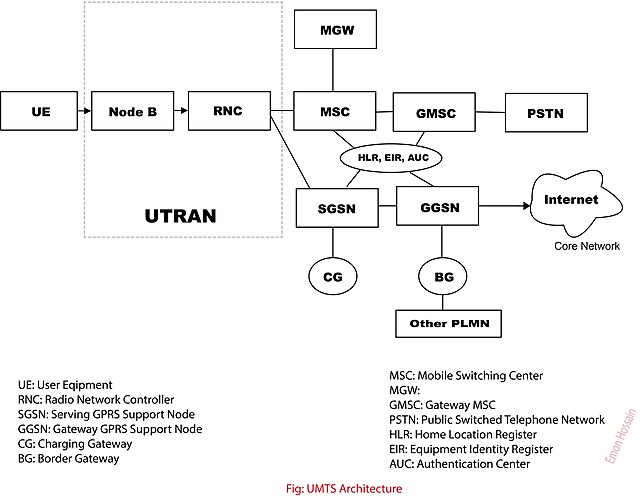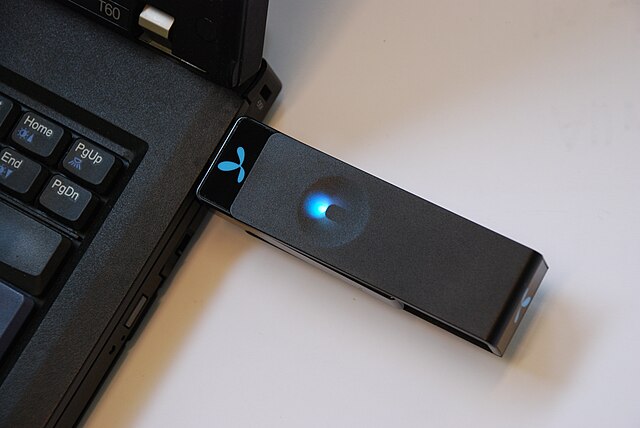The Universal Mobile Telecommunications System (UMTS) is a third generation mobile cellular system for networks based on the GSM standard. Developed and maintained by the 3GPP, UMTS is a component of the International Telecommunication Union IMT-2000 standard set and compares with the CDMA2000 standard set for networks based on the competing cdmaOne technology. UMTS uses wideband code-division multiple access (W-CDMA) radio access technology to offer greater spectral efficiency and bandwidth to mobile network operators.
UMTS network architecture
UMTS base station on the roof of a building
The Nokia 6650, an early (2003) UMTS handset
3G is the third generation of wireless mobile telecommunications technology. It is the upgrade to 2G, 2.5G, GPRS and 2.75G Enhanced Data Rates for GSM Evolution networks, offering faster data transfer, and better voice quality. This network was superseded by 4G, and later by 5G. This network is based on a set of standards used for mobile devices and mobile telecommunications services and networks that comply with the International Mobile Telecommunications-2000 (IMT-2000) specifications set by the International Telecommunication Union. 3G is used in wireless voice telephony, mobile Internet access, fixed wireless Internet access, video calls and mobile TV.
A USB modem for 3G plugged into a laptop.




